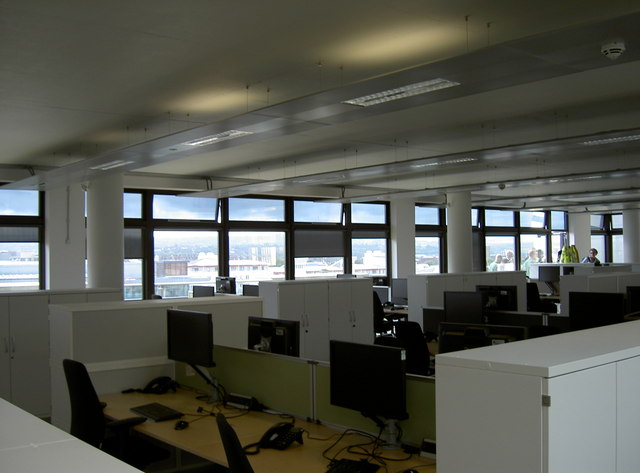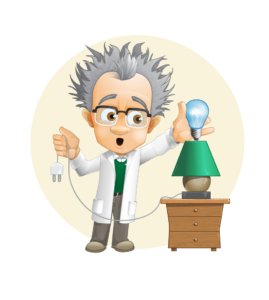For those who specify light levels for commercial office spaces, there is a new challenge to the standard 500 lx (50 foot candles) typically used for work space applications. Advances in technology, the changing nature of office work, and the expanding age range for employees can make choosing the right light levels for a modern office more difficult than you might expect.
The modern workplace includes employees who fall within a wide range of ages, from younger employees in their early 20s to the older 60s or even 70s. At age 45, near sighted vision tends to decline, making it difficult for older people to see in dimmer standards of light. Studies show that a 45-year-old worker may need double the light that a 20-year-old needs, while a 60-year-old may need five times as much.
Dr. Bianca van der Zande, principal scientist at Philips Lighting, says insufficient lighting can cause eye-strain due to poor lighting in workplaces. Eye-strain can also lead to neck pain, headaches, and fatigue, which may inevitably cause employees to take additional sick leave. “These symptoms may have many underlying causes but perhaps one of these could be the result of prolonged eye-strain due to poor lighting conditions in their working lives,” said Dr. Van der Zande. “The workplace lighting determines to a large extent the comfort and wellbeing of the office employees, which can positively or negatively influence their performance.”
However, a brighter lighting standard isn’t exactly the answer. Adding more overhead light would be needlessly wasteful. Studies in workplace lighting have indicated that the activities within an office can be optimized with more or less light. For tasks involving intense focus, a lighting standard of 1000 lx is needed, while creative tasks are accomplished more efficiently in lower light levels.
Clearly, a blanket solution to the problem is not ideal. Instead, companies might need to give their employees the freedom to set their own light levels. In a 2013 study conducted by Philips, employees were given desk lamps with the ability to set custom light levels and color temperatures. The study revealed that 90% of workers reported higher visual acuity and reduced ocular strain.
More than a few LED-based lighting designs have been put to market for exactly this purpose, such as the workstation luminaire introduced by the Lighting Quotient in 2014. Other projects, such as LED panels produced by Arborlight which emulates the temperature and intensity of light outside, are also seeking to improve the quality of indoor lighting. “People spend 80-90% of their time indoors from which around 20% is spent at work, so the indoor environment determines to a large extent the comfort and wellbeing of the office employee,” says Dr. Van der Zande. “It is important that human-centric lighting becomes a part of the regulatory standards, allowing architects and building designers to advise for the best solutions – not only for offices, but for all building environments.”
As we continue to learn more about ourselves and the way our physiologies evolved to exist in a sunlit world, it is important to add what we learn to the practices we use every day. Standardized, mass-produced fluorescent lighting was certainly a reasonable choice for commercial and business environments in the past. However, from a lighting perspective, the typical modern workplace environment is drastically different than it was several years ago. If we hope to optimize every individual in the word place, it may be worth considering each employee as having individual needs—beginning with the amount of light they need to see by.



